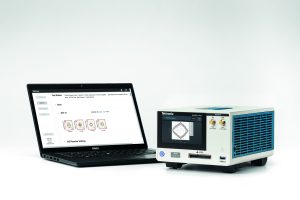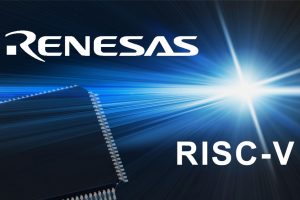 All readers will agree that today’s unsung heroes of innovation around the world, especially when it relates to electronic devices and communication technologies, are the engineers who develop the test equipment used to validate those new technologies in order to take them to market. A fundamental challenge to innovation is the design trade-off decisions between application specific integrated circuits (asics) and field programmable gate arrays (FPGAs).
All readers will agree that today’s unsung heroes of innovation around the world, especially when it relates to electronic devices and communication technologies, are the engineers who develop the test equipment used to validate those new technologies in order to take them to market. A fundamental challenge to innovation is the design trade-off decisions between application specific integrated circuits (asics) and field programmable gate arrays (FPGAs).
Assembling a team of experts to design application-specific circuits and develop IP creates a moat around products that position companies to maintain differentiation in their portfolios. The cost and complexity of asic development enables larger companies to protect themselves from industry disruption.
Smaller companies and start-ups, on the other hand, are often forced to use commercially available parts with more constraints in specific or niche applications.
Power budget considerations
Asics offer a per-part cost advantage compared to those using commercially available parts. Since the design and IP are owned by the vendor, parts can be produced for a lower cost than parts that are commercially available for purchase. This advantage grants higher gross margins and leads to more investment in future innovation.
A tight power budget is a concern in new product development where asics frequently hold the advantage over FPGAs. FPGA typically requires more power to operate than an asic for the same application.
While there are a number of advantages to using asics in innovative design, they also present notable challenges. The nature of an asic is that it must either be developed prior to the product development itself, or concurrently with the product development, which introduces significant risk and adds time and expense to the project.
While extending project timelines is not ideal, arguably the biggest challenge with using asics comes down to development expense. This initial investment is often a massive commitment from a company that is unlikely to see a return on that investment for many years, due to both the asic and product development timelines.
Asics are optimised for their initial intended application, but if a change is needed to address new functionality, or a bug is discovered later in development, often asics are not flexible enough to address these ‘design for change’ needs. This is generally in contrast to FPGAs, which have the flexibility to address changes remotely via firmware upgrades that are far less disruptive to customer workflows.
FPGAs for innovation
With FPGAs, a much looser set of initial feature requirements is acceptable, as they can be adapted along the way. This lack of flexibility is not always a significant burden, especially when FPGAs are involved in the design, but it is a key consideration when it comes to business and engineering tradeoffs.
 Beyond the more nuanced advantages around per-part costs, power, size and capability, the true advantage of asics in product innovation is the IP and differentiation it enables. Asics are not the only way to sustain competitive differentiation; this eventually can be done using commercially available parts such as FPGAs.
Beyond the more nuanced advantages around per-part costs, power, size and capability, the true advantage of asics in product innovation is the IP and differentiation it enables. Asics are not the only way to sustain competitive differentiation; this eventually can be done using commercially available parts such as FPGAs.
Despite being available for a long time, FPGAs have taken a Moore’s law-style trajectory over the years. With increasing flexibility in terms of power and space requirements, FPGAs are making a meaningful run at asics across many applications.
The main advantages of using an FPGA in breakthrough innovation are exactly the disadvantages of using an asic, namely time to market, project cost and ‘design for change’ flexibilities.
If an attractive market opportunity arises quickly, as they typically do in today’s fast-paced technology environment, it is difficult to react in a timely manner using an asic.
Utilising an FPGA-based product, as opposed to an asic-based one, can give companies the reaction time needed to secure a first mover’s advantage in the market. In addition, it also offers the ability to engage with customers earlier on product concepts or features to de-risk the product well before launch
With the growth in FPGA capabilities, it can be difficult to see the downsides from a company leadership perspective. In reality, while these advantages are becoming increasingly enticing, FPGAs are designed to support general use. The more an engineer forces an FPGA into a new or niche application, the more difficult it is to make a product work as intended.
For companies trying to enter niche markets or applications, making use of an FPGA can be a difficult task. Strict power requirements, space constraints, product capabilities and developing IP using an FPGA-based product can make development risky, and in some cases impossible without bearing the cost and time burden of asic development.
Considerations
The added per-part cost is also something to consider. While there are metrics around project timelines and project costs, there are often strict metrics around both gross and operating margins. While an FPGA may be able to accomplish the same job as an asic, the per-part can be meaningfully higher when using an FPGA. FPGAs can keep project costs down, however the standard cost of the instrument is typically higher than an instrument using an asic for the same job. This tradeoff is often at the heart of business decisions within innovation.
The final consideration between FPGAs and asics is the application itself. If an engineer tries to fit a general purpose part into a niche application, there is no guarantee the part will support the intended product functionality. This challenge can sometimes be overcome through creative engineering, but it can also result in an increased risk of project cancellation, issues with supporting key features, and lead to unanticipated schedule delays.
Where FPGAs may offer schedule advantages, the unforeseen design challenges can quickly wipe those advantages away, which in turn stands to erase the cost advantages.
Shifting sands
As the industry evolves, it is not surprising to see the shift to integrating asics into FPGAs, which has driven even further adoption of FPGAs. Noting all of the tradeoffs mentioned, FPGA vendors are interested in optimising the pros and minimising the cons, by including hard IP on their FPGAs to support more niche applications. As the industry continues to evolve, it is expected that these hybrid FPGA + asic parts will continue to carve out more market for FPGAs across all industries.
Will there be a future where FPGAs fully replace the need for asics? It is unlikely, but if FPGAs are becoming an increasingly relevant option for faster development in an environment where project cost is under more scrutiny than ever, using FPGAs allows engineers to get preliminary product functionality in front of customers throughout product development, and to garner customer feedback on concepts and features quickly.
Being able to develop differentiation without asics enables fast responses to industry trends and customer needs with devices that are not available on the market.
 Electronics Weekly Electronics Design & Components Tech News
Electronics Weekly Electronics Design & Components Tech News




